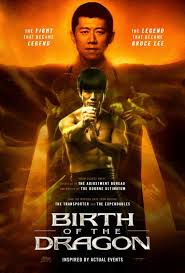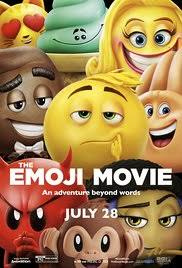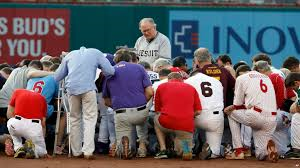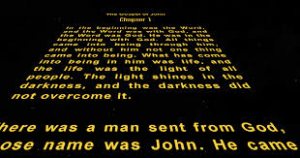
If you read my last post, you know how unexcited I felt about seeing the newly released The Emoji Movie. However, there is a movie coming out this summer that I have really been wanting to see: Birth of the Dragon. I loved Dragon: The Bruce Lee Story and most have seen the classic Bruce starred in himself Enter the Dragon where he fights the American version of himself, Chuck Norris!
But if all you know of Bruce is his fighting side, then you don’t know Bruce. Bruce was just as much of a philosopher as he was a fighter. Lee, claimed by many to be the father of mixed martial arts, had a method behind his madness. Bruce never let a crystallized style determine his fighting substance. He was ever-evolving so that he could take on and defeat any art form. Some of Bruce’s greatest teachings relate to this belief such as “become like water” and “using no way as (the) way, having no limitation as limitation.”
Bruce is what I call a master teacher. With school starting back up for most of the next generation (unless your school-round, etc.), teachers are beginning to get back into gear. However, most school teachers couldn’t hold a candle to Bruce’s teaching. I find Bruce to be one of the greatest teachers from the 20th century. He lived what he taught and practiced what he preached.
But whereas Bruce was a great teacher; Jesus was the best teacher! Jesus had some sayings that were similar in wording to Bruce’s teachings, but as different from night is to day in meaning. Bruce said no way was the way. In other words, any religion will do. In fact, mix all religions together and that will work just as well. Just never claim that you have it all figured out. Jesus said the polar opposite in John 14:6 when Jesus said, “I am the way and the truth and the life. No man comes to the Father except through me.”
When it comes to water, Jesus says in John 4:14, “but whoever drinks of this water that I give will never be thirsty again.” When it comes to limits, the Lord says he is the beginning and the end (Revelation 1:8).
No one taught like Jesus, not even Bruce Lee. Jesus never said you needed a lot of faith to do great things. Jesus just said you needed faith (“as small as a mustard seed”-Luke 17:6). Jesus said the first would be last and the last would be first (he went as far to say that one must be a slave to all in order to be first) and that no one could receive his kingdom until they first became like a child (he wasn’t talking about one’s maturity level).[1] Like Bruce, Jesus was very methodical in his teaching. Both were great teachers. I would love to take a martial-arts lesson from the master. But when it comes to matters dealing with eternity and how to live life, I choose the Master every time.
[1] James C. Wilhoit, Spiritual Formation as if the Church Mattered, 143-44.



 In the above picture, you can see what is called the Alienware Area 51. Boy, gaming sure has come a long way than when I used to play! I still don’t mind playing the occasional sports game, but when I was a teenager, gaming was bigger than life. Sure, I was active outdoors and in the neighborhood, went to school and church, but I, like many of my friends, lived to game!
In the above picture, you can see what is called the Alienware Area 51. Boy, gaming sure has come a long way than when I used to play! I still don’t mind playing the occasional sports game, but when I was a teenager, gaming was bigger than life. Sure, I was active outdoors and in the neighborhood, went to school and church, but I, like many of my friends, lived to game!
 In light of last week’s horrific event, I thought it a good idea to write about the importance of protecting our students in an increasingly dangerous world. If adults, especially congressmen and women of our great nation, need security while playing baseball, how much more so do our children and youth? Protecting our young should always be a first priority in next generation ministry.
In light of last week’s horrific event, I thought it a good idea to write about the importance of protecting our students in an increasingly dangerous world. If adults, especially congressmen and women of our great nation, need security while playing baseball, how much more so do our children and youth? Protecting our young should always be a first priority in next generation ministry. Buzzwords come and go but the buzzword being heard in the church today is the word legacy. Legacy is an important word in next generation ministry (NGM) because of the command for parents to hand down the faith that they have been entrusted with to their children and to their children’s children (Deut 6:1–9; 2 Tim 1:5, 14). The faith must be passed onto the next generation if the church is going to thrive. Churches and families partner together in the process of passing down the faith to the generations that succeed them. The by-product of parents and leaders successfully handing off the baton of faith is the creation or continuance of a spiritual legacy. It is more important for next generation parents and leaders to possess a spiritual legacy than it is to be a world-renowned legend.
Buzzwords come and go but the buzzword being heard in the church today is the word legacy. Legacy is an important word in next generation ministry (NGM) because of the command for parents to hand down the faith that they have been entrusted with to their children and to their children’s children (Deut 6:1–9; 2 Tim 1:5, 14). The faith must be passed onto the next generation if the church is going to thrive. Churches and families partner together in the process of passing down the faith to the generations that succeed them. The by-product of parents and leaders successfully handing off the baton of faith is the creation or continuance of a spiritual legacy. It is more important for next generation parents and leaders to possess a spiritual legacy than it is to be a world-renowned legend.



